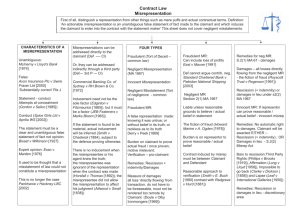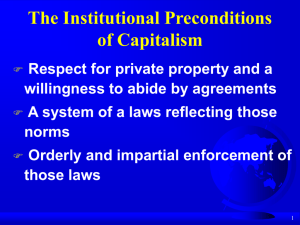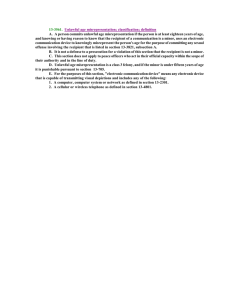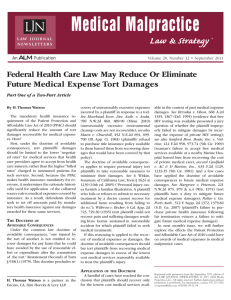Transcript of this slide
advertisement
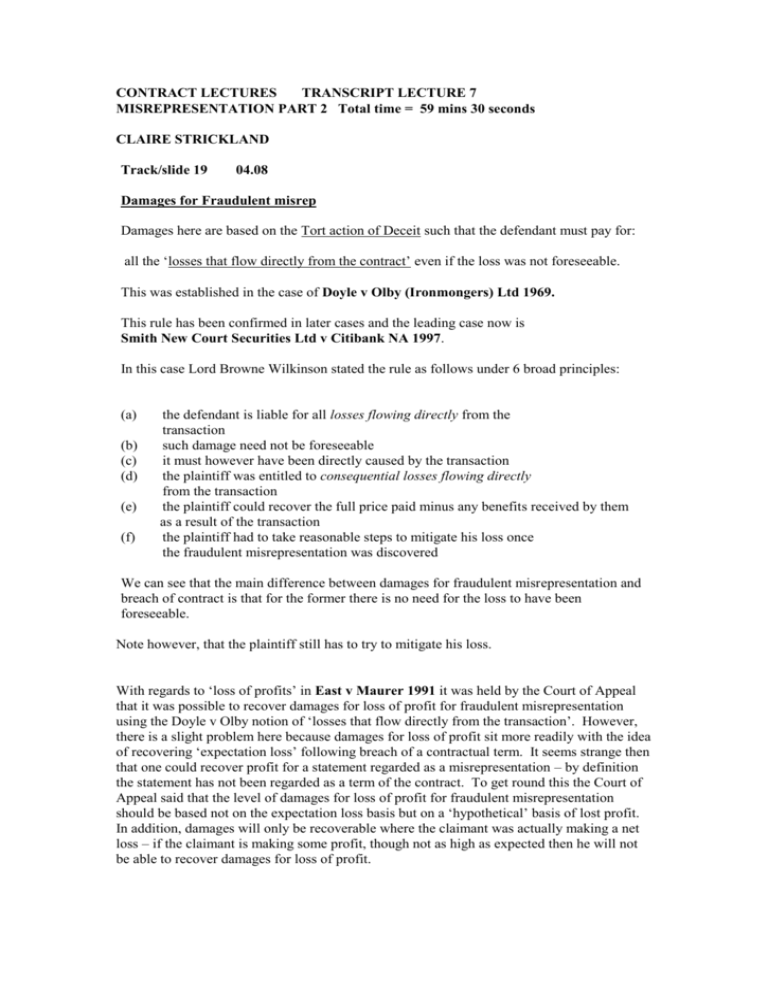
CONTRACT LECTURES TRANSCRIPT LECTURE 7 MISREPRESENTATION PART 2 Total time = 59 mins 30 seconds CLAIRE STRICKLAND Track/slide 19 04.08 Damages for Fraudulent misrep Damages here are based on the Tort action of Deceit such that the defendant must pay for: all the ‘losses that flow directly from the contract’ even if the loss was not foreseeable. This was established in the case of Doyle v Olby (Ironmongers) Ltd 1969. This rule has been confirmed in later cases and the leading case now is Smith New Court Securities Ltd v Citibank NA 1997. In this case Lord Browne Wilkinson stated the rule as follows under 6 broad principles: (a) (b) (c) (d) (e) (f) the defendant is liable for all losses flowing directly from the transaction such damage need not be foreseeable it must however have been directly caused by the transaction the plaintiff was entitled to consequential losses flowing directly from the transaction the plaintiff could recover the full price paid minus any benefits received by them as a result of the transaction the plaintiff had to take reasonable steps to mitigate his loss once the fraudulent misrepresentation was discovered We can see that the main difference between damages for fraudulent misrepresentation and breach of contract is that for the former there is no need for the loss to have been foreseeable. Note however, that the plaintiff still has to try to mitigate his loss. With regards to ‘loss of profits’ in East v Maurer 1991 it was held by the Court of Appeal that it was possible to recover damages for loss of profit for fraudulent misrepresentation using the Doyle v Olby notion of ‘losses that flow directly from the transaction’. However, there is a slight problem here because damages for loss of profit sit more readily with the idea of recovering ‘expectation loss’ following breach of a contractual term. It seems strange then that one could recover profit for a statement regarded as a misrepresentation – by definition the statement has not been regarded as a term of the contract. To get round this the Court of Appeal said that the level of damages for loss of profit for fraudulent misrepresentation should be based not on the expectation loss basis but on a ‘hypothetical’ basis of lost profit. In addition, damages will only be recoverable where the claimant was actually making a net loss – if the claimant is making some profit, though not as high as expected then he will not be able to recover damages for loss of profit.



